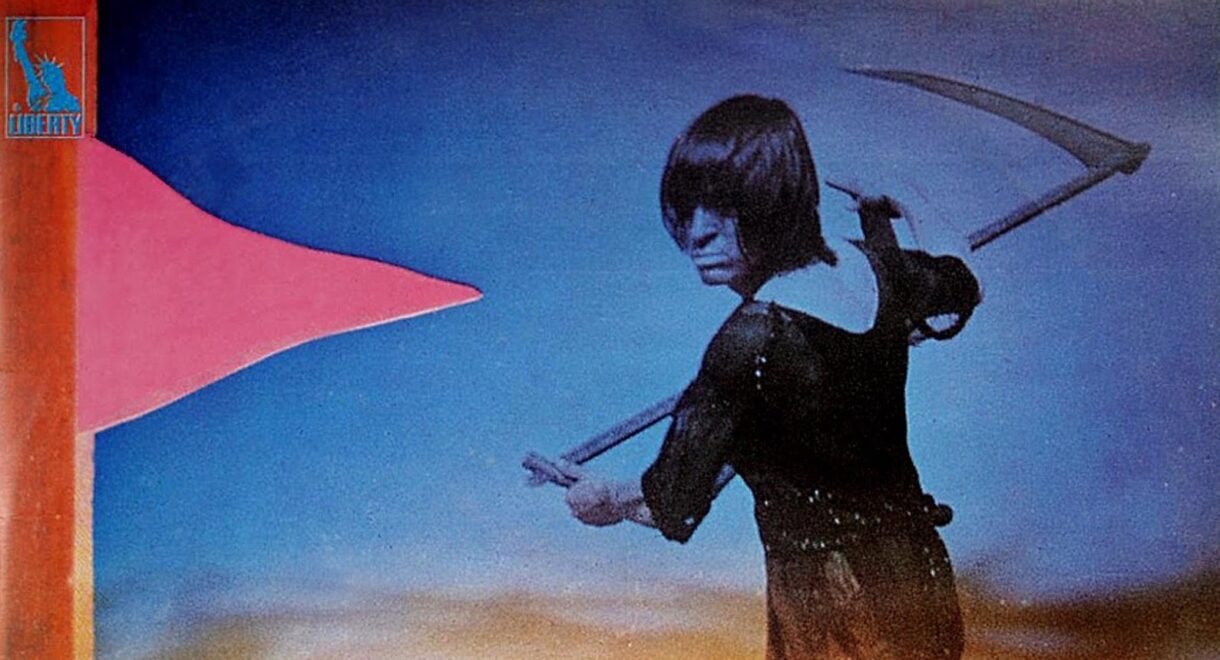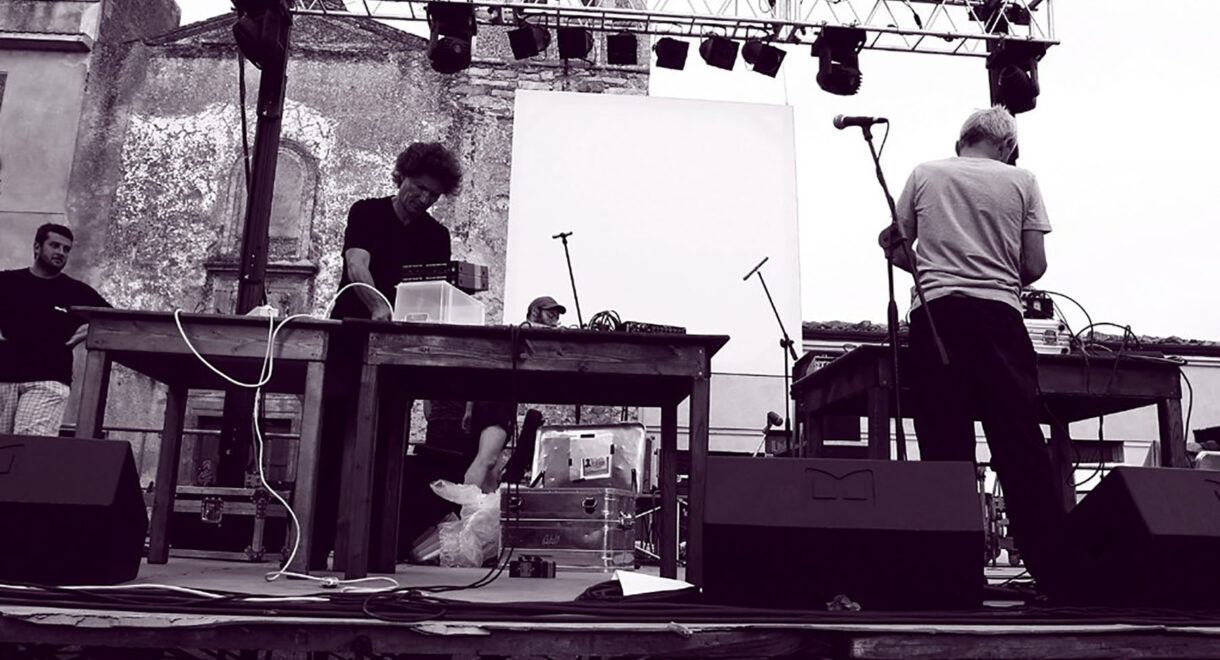In Krautrocksampler, his great book about German cosmic music, the musician, collector and writer Julian Cope describes the sensation of being a fan of Can, Neu!, Cluster, Amon […]
Future Days: A Post-CAN Retrospective

Join us for a krautrock listening party this Friday at the JACCC private Japanese garden.
Holger Czukay, Michael Karoli, Jaki Liebezeit, Irmin Schmidt: The core members of visionary Krautrock band CAN released timeless experimental rock music over the roughly ten years that they were active. We’ve all heard the albums. Following the band’s breakup in 1979, though, the founding members split off into various configurations and continued to release incredible genre-bending music, taking the rhythms and sounds they developed as CAN and diving even further into them. Though less known, much of this work is as good as — and (dare we say it?) at times even better than — their work as a group. We’ve shared our favorites below, including a few of the lesser known projects.
Join us this Friday at JACCC: https://jaccc.org/events/future-days-krautrock-berlin-schoola-listening-party/
Dunkelziffer
A “supergroup” formed from the ashes of the kraut explosion, Dunkelziffer was created with an ideal that all members had equal rights to composition and decision making. The group centered primarily around Dominik Von Senger (guitar), Reiner Linke (percussion) and Helmut Zerlett (keyboards) but also included a rotating cast of collaborators including Jaki Liebezeit and Damo Suzuki. Over the course of 4 studio LP’s, the group would experiment “without making concessions to fashion, trend, image, the common 4/4 schemes,” resulting in mutant genres like “Kosmische-fusion” and “Teutonic reggae.”
Phantom Band
Jaki Liebezeit, Rosko Gee (Can’s bassist after Holger), along with members of the closely related Dunkelziffer made up the short-lived African and Jamaican rhythm inspired Phantom Band. Rosko, who was also Traffic’s bassist, played a key role in the group’s excellent 1980 debut with his vocals and writing, bringing an almost pop sensibility to the tracks. Recorded by legendary producer Conny Plank, Phantom Band featured a range of upbeat hypnotic grooves from balearic kraut to psychedelic fusion all driven by the great rhythm section of Jaki and Rosko.
Irmin Schmidt/The Inner Space
Not technically a post-CAn release, Irmin Schmidt & The Inner Space’s Kamasutra is the soundtrack to Kobi Jaeger’s erotic and educational epic Kamasutra: Consummation Of Love. Released four decades after its making, the 1968 recording features Can’s original line-up of Michael Karoli, Jaki Liebezeit and Malcolm Mooney. Laid-back, percussive instrumentals meet flutes, sitars, and psychedelic guitar in a wonderful early showing of what the group would become.
Michael Karoli + Polly Eltes
Michael Karoli’s dubby post-punk project with English model/actress Polly Eltes is probably the least known on this list and arguably one of the best. Karoli plays nearly all of the tripped out, heavily processed instruments on the album while Eltes provides perfectly ethereal half-sung vocals. The songs are loose and wonderfully strange, often breaking into extended jam sections filled with tape distortion and echo. It’s all wildly inventive and a strong showing of Karoli’s genius.
Technical Space Composer’s Crew
In 1969, Czukay released Canaxis 5 with sound engineer Rolf Dammers as the Technical Space Composer’s Crew. The album contained two long experimental ambient compositions comprised of ethnic and classical music collages mixed with Czukay’s bass playing. It’s a difficult but rewarding listen and a reminder of Czukay’s avant-garde roots studying under visionary composer Karlheinz Stockhausen.
Holger Czukay (Solo)
The most successful solo artist of the group and arguably the most prolific (it’s a tough contest with Jaki), Czukay released a number of varied experimental and leftfield solo albums post-CAN that all have at least one “hit” single. There’s the ethnic synth-pop of Movies that gave us perennial favorite “Cool in the Pool”, the kraut-psychedelia of On The Way To The Peak Of Normal with its wailing synth-driven “Ode To Perfume”, and Der Osten Ist Rot with the wonderfully strange “Photo Song” that has one of our favorite music videos. Of course, that’s just the tip of the iceberg with Czukay…
Holger Czukay + Jah Wobble
Along with a strong solo career, Czukay also had a number of storied collaborations. In fact, the artist emphasized that his creativity was always contingent upon a musical partner, whether that be a person or a sample source. Our favorite is perhaps his partnership with Public Image bassist Jah Wobble, which resulted in two classic mini-albums. Snake Charmer is a balearic dance favorite that features a few unexpected collaborators including dance music producer François Kevorkian and U2’s The Edge. Full Circle sees the duo team up with Jaki for some new-wave experimental dub fun that is surprisingly danceable. Kosmische disco opener “How Much Are They?” would later become a favorite at David Mancuso’s legendary Loft parties.
Jaki Liebezeit + Burnt Friedman
Nu Dub Players’ Burnt Friedman and Jaki Liebezeit’s early 2000’s “Secret Rhythms” project is the closest in this list to what most consider “electronic music”, though Can of course also used electronic instruments. Liebezeit’s “outernational” drumming and percussion provide the pulse as usual, while Friedman adds synthesized textures, effects, and atmosphere through digital production techniques. Live instrumentation gets thrown in the mix as well creating a wholly unique sound that is somewhere between electronic music, avant-garde jazz, fusion, and dub.










